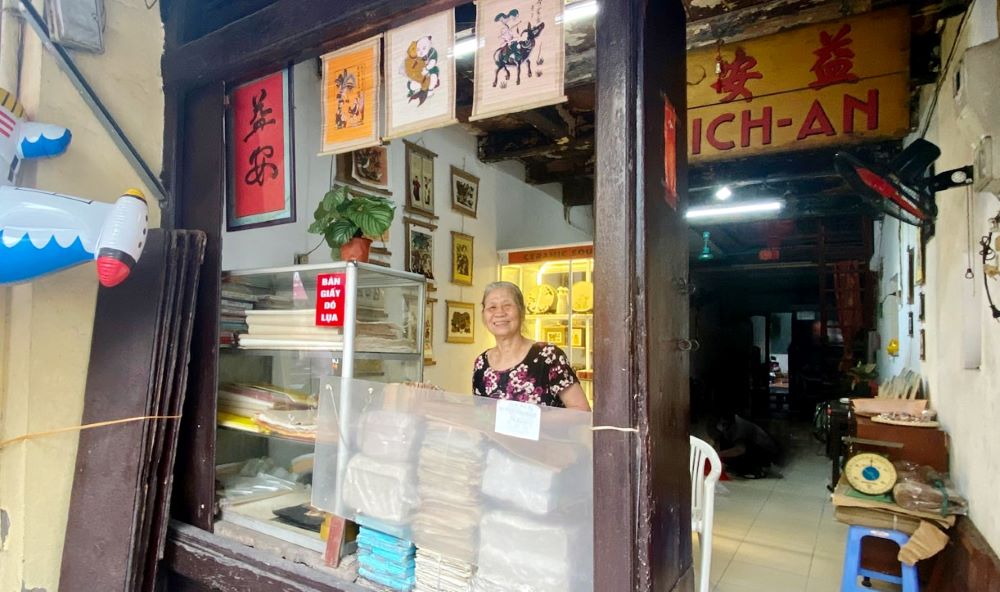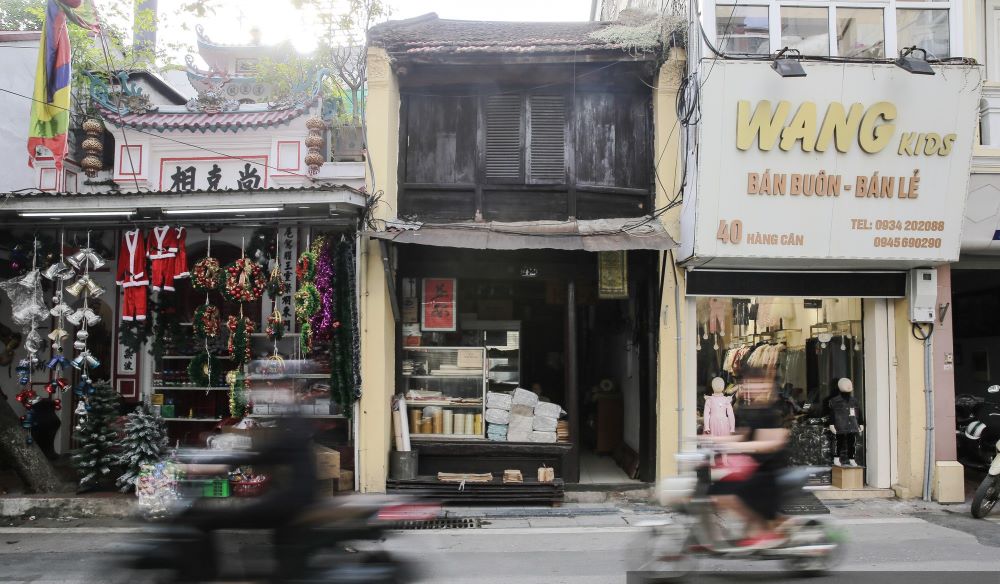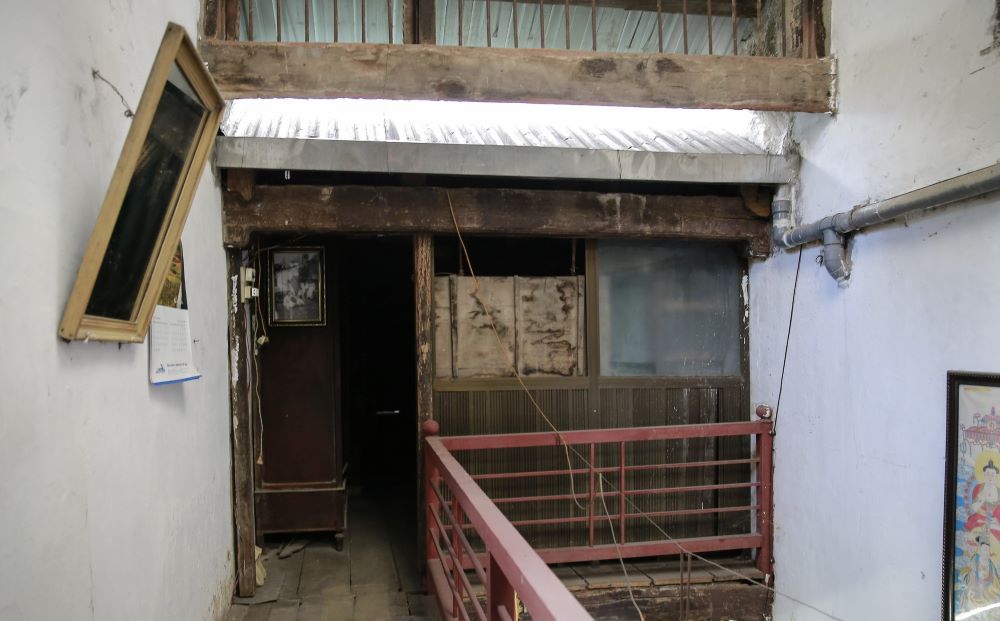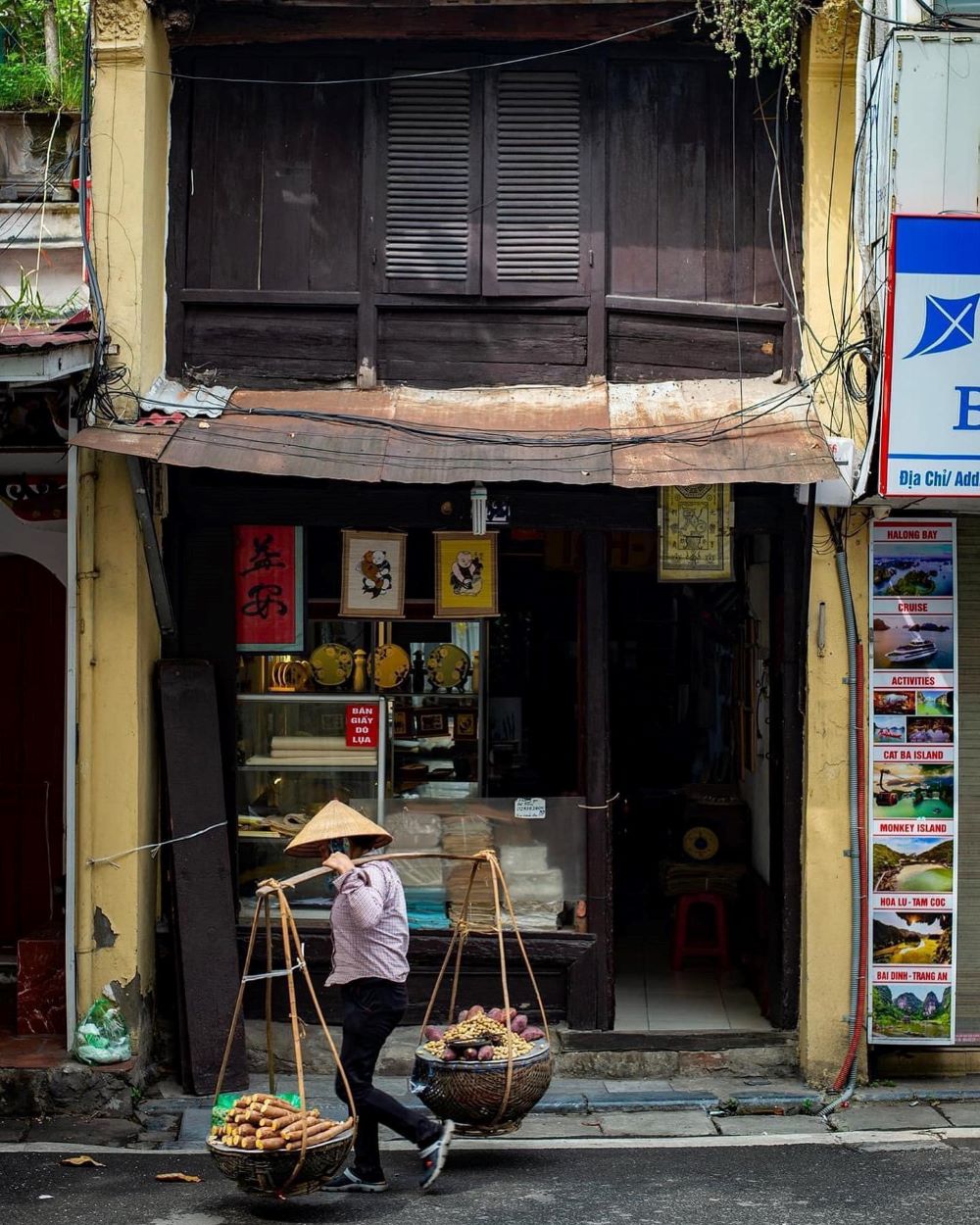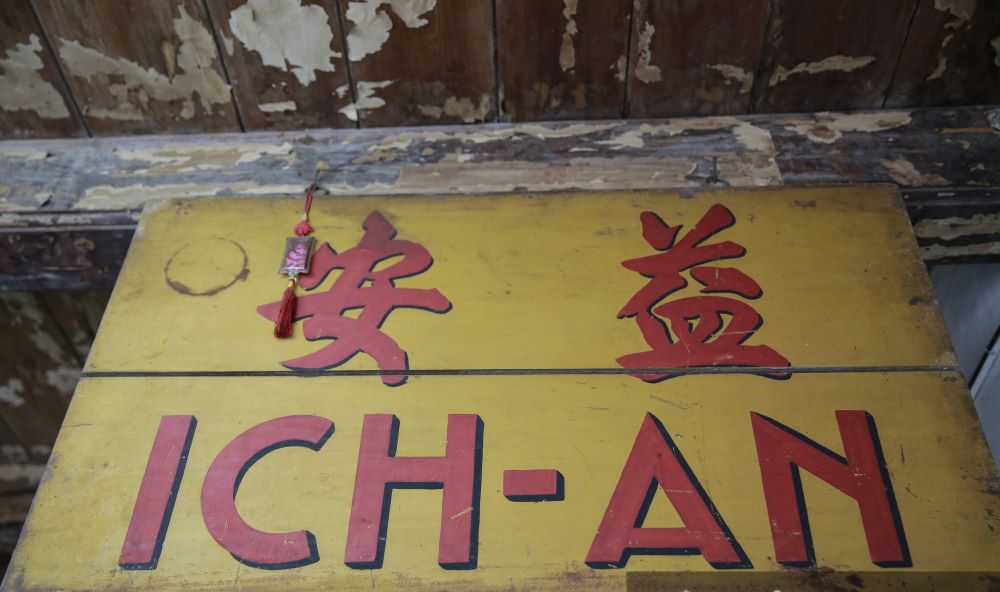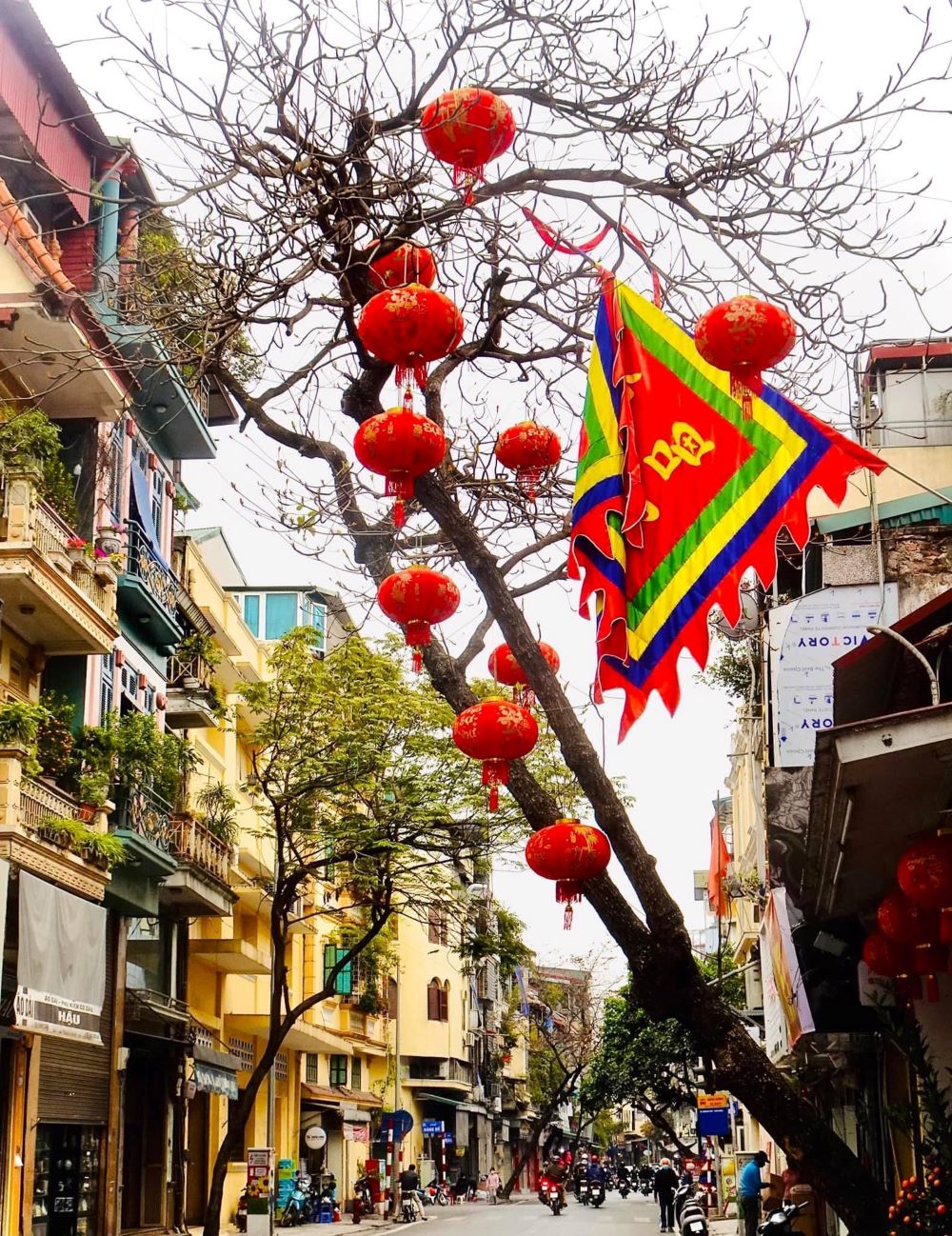Hang Can Street: Ancient charm of modern capital
The narrow streets of Hanoi's Old Quarter are filled with intriguing secrets that captivate residents and pique the curiosity of visitors alike.
Located about 300 meters northwest of Hoan Kiem Lake, Hang Can Street is parallel to Hang Ngang Street in Hang Dao Ward, Hoan Kiem District, Hanoi. It stretches 104 meters from Cha Ca - Lan Ong intersection to Hang Bo - Luong Van Can intersection.
| Le Thi Thanh Tam, 80, and her old house on Hang Can Street, Hoan Kiem District, Hanoi. Photo: Hanoimoi |
Before the contemporary name of 'Hang Can' appeared around the late 19th century, the street was called Hang Son Street or Rue de la Laque or 'Lacquer Street'). Its northern section is known as 'Lower Hang Son' and the southern one as 'Upper Hang Son'. At that time, the street belonged to Huu Dong Mon and Xuan Hoa communes, Tien Tuc Canton, Tho Xuong District.
When there was still a branch of the To Lich River flowing through the area, boats carrying lacquer from Phu Tho Province to Hanoi even reached the middle of Hang Ca and Hang Buom Streets, where there were numerous lacquer shops on both sides of the river. After this branch of the river was filled, merchant boats had to dock at Phuc Tan Wharf and lacquer was sold mainly in streets such as Cau Go, Hang Be, and Hang Dau. Meanwhile, on Hang Son Street ("Hang Son" literally means "Paint Shop"), a number of shops producing and selling scales gradually appeared. That's why people changed the name to Hang Can - 'Scale Shop'.
| The ancient house No.42 Hang Can Street. Photo: Dan Viet |
The history of scale production and trade in Hanoi also began at the end of the 19th century. At that time, merchants from Phu Ly (Ha Nam Province) used to sell their scales at Dong Thanh and Cau Dong markets. Some of them stayed in Tuong Van Phong's house at the end of the street, where he learned the craft of making scales and wooden rulers before opening a shop next to Xuan Hoa Temple and hiring workers. Soon after, other households on the street also took up the trade.
The scales sold at that time were of different types. For example, precision scales were kept in wooden boxes and used to weigh gold, silver, or Chinese herbal medicine. Another type was wooden scales with copper nails for weighing dry goods, called "can ta" (native scales). In the 1940s, all kinds of foreign competitors, such as iron scales, spring scales, Roberval scales, and table scales, flooded in, and local scale-making fell into oblivion. Hang Can soon became a mere name, as there was no can ta shop here anymore.
| The space inside the House 42 Hang Can. Photo: Dan Viet |
In the late 20th century, waste paper suddenly became valuable, and Hang Can Street was lined with shops that collected it. The small type was sold to stalls selling sticky rice, roasted peanuts, or dried apricots as wrapping paper. Larger pieces were colorfully dyed to make joss paper, while the large type was used to make cardboard packages of all sizes.
After hundreds of years, Hang Can Street still retains some ancient features. A notable landmark here is the Xuan Hoa Temple, built around the end of the Le Dynasty (late 18th century) and dedicated to the deity Lan Ngoc, who had the merit of helping the ancestors of the Nguyen clan defeat the Champa army.
In addition, the temple is also where the locals worship Mother Goddess Lieu Hanh, the Duc Thanh Tran, and Mother Goddess of Mountains and Forests. Through restorations, the temple still houses many relics of historical and artistic value from the 19th and 20th centuries.
There are three deity steles erected under the Nguyen dynasty and engraved with the temple repairs and contributions, one dated to the 2nd year of Minh Menh's reign (1821) and another during Thieu Tri's (1841-1847).
| The chic and unique architect of the house No.42 Hang Can Street. Photo: Tuan Nguyen |
Also in the temple are 14 round statues lacquered in gold and crimson, one dragon-carved incense table, one dragon-carved hand-washing water holder, one dragon-carved door frame, four dragon-carved worship thrones, a dragon-carved altar curtain, a bronze bell dated during the reign of Tu Duc (1848-1883), four pairs of couplets, and six horizontal inscribed panels lacquered in gold and purple.
Apart from the religious building, visitors to Hang Can Streets are attracted by small houses, either one-story or with attics in the "chong diem" (stacked roofs) style. Surrounded by modern houses, the house of Le Thi Thanh Tam, 80, at No. 42 stands out with its tiled roof and ironwood doors.
Built around the late 19th and early 20th century, this space holds the fond memories of a five-generation family in the Old Quarter. The once famous grocery store was named "Ich - An" (Helpful and Peaceful) by Tran Huu Lap - the first owner of the house - with a name board that still hangs just a few steps behind the front door.
The 2-story house has a total area of over 100 square meters. With its unique tubular design and length of more than 40 meters, a passerby looking from the outside can hardly see all the inside.
| The plaque in front of the house with the words "Helpful and Peaceful |
On the first floor, there is a living room, two skylights that illuminate the house, a kitchen, and a toilet. Upstairs is now a place of worship for their ancestors, grandparents, and parents.
A special feature of the house is that the entire ceiling, columns, windows, main doors, and staircase are made of ironwood and have been there for more than 130 years. The first floor used to be paved with red bricks, which were replaced with ceramic tiles for the safety of her grandchildren.
Since the end of the 20th century, most households in the neighborhood have remodeled their homes, opening modern businesses while living upstairs or in the back. But her family has never rented the house to anyone.
| Today Hang Can Street. Photo: Nguyen Tuan |
"The antique furniture always reminds me of the time when the whole family lived together. We want to preserve the beauty that our elders left behind. This is our parents' and grandparents' years of hard work," said Tam's granddaughter-in-law.
Today, many visitors to Hanoi's Old Quarter - both Vietnamese and foreign tourists - stop on Hang Can Street to see and photograph Mrs. Tam's house. "Everyone who comes here compliments the house for being beautiful, airy, and comfortable. Many strangers who visit the street for the first time still ask to visit the house because they are so attracted by its medieval architecture," Tam said proudly.

